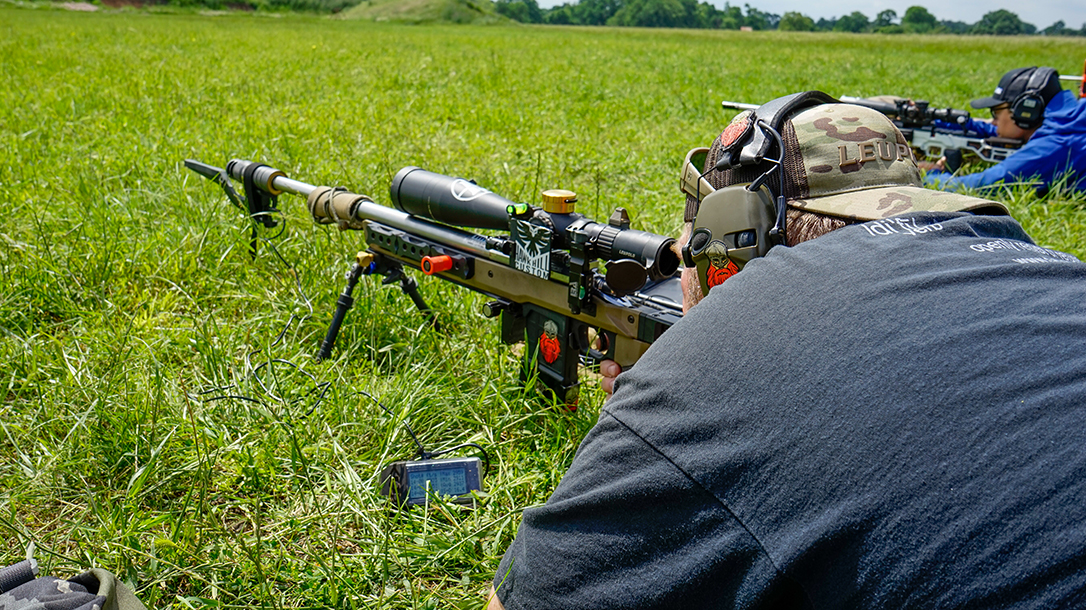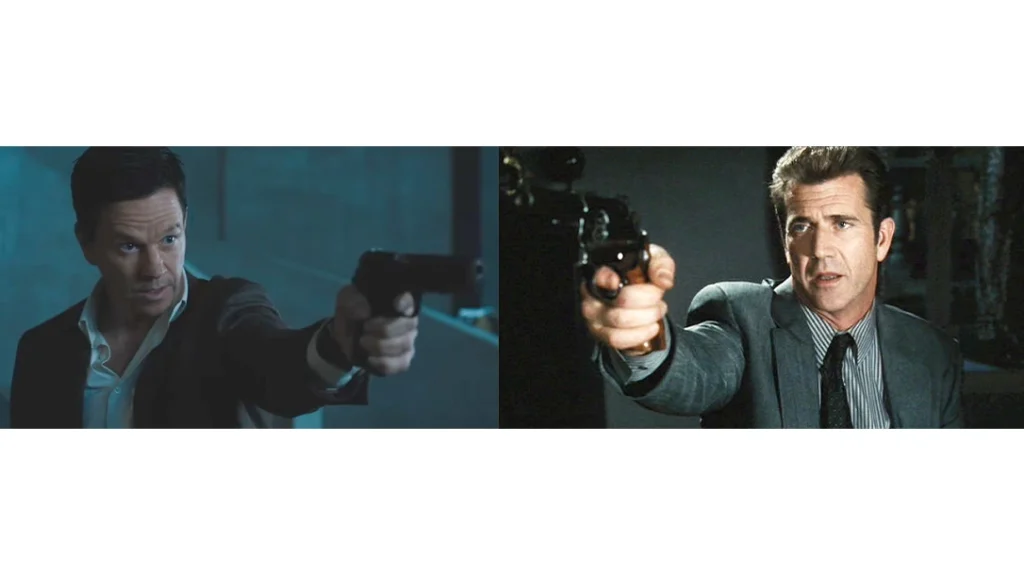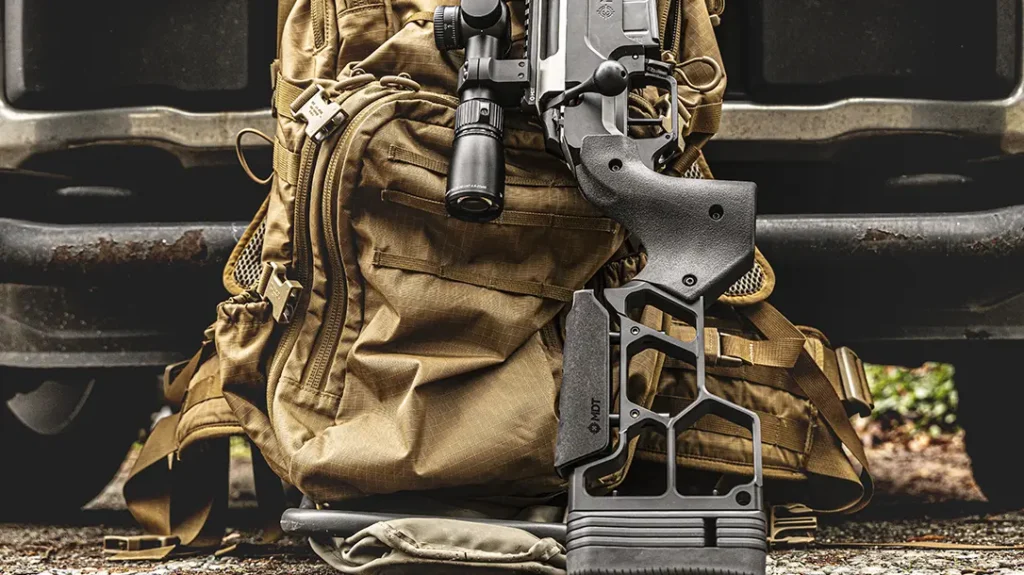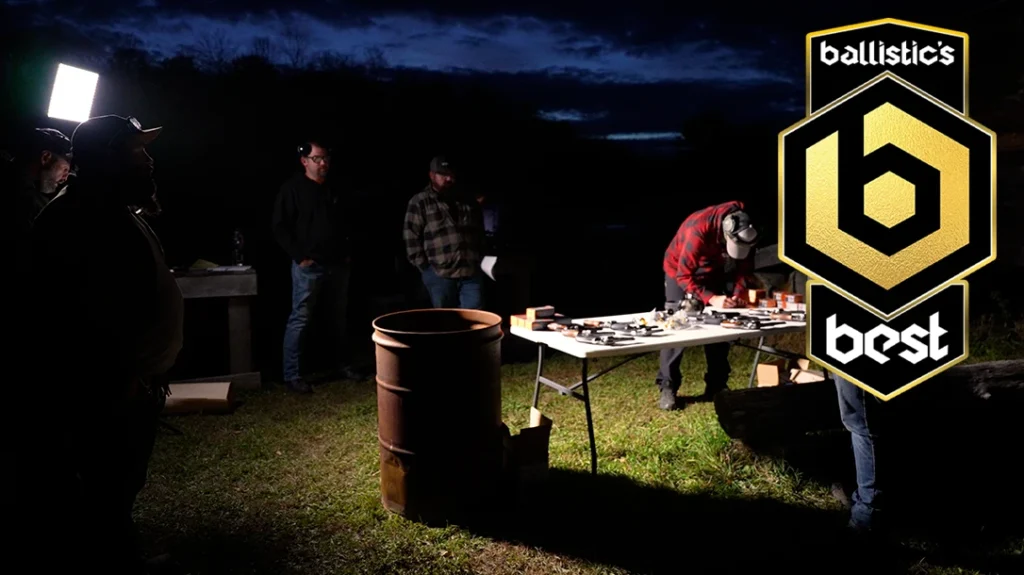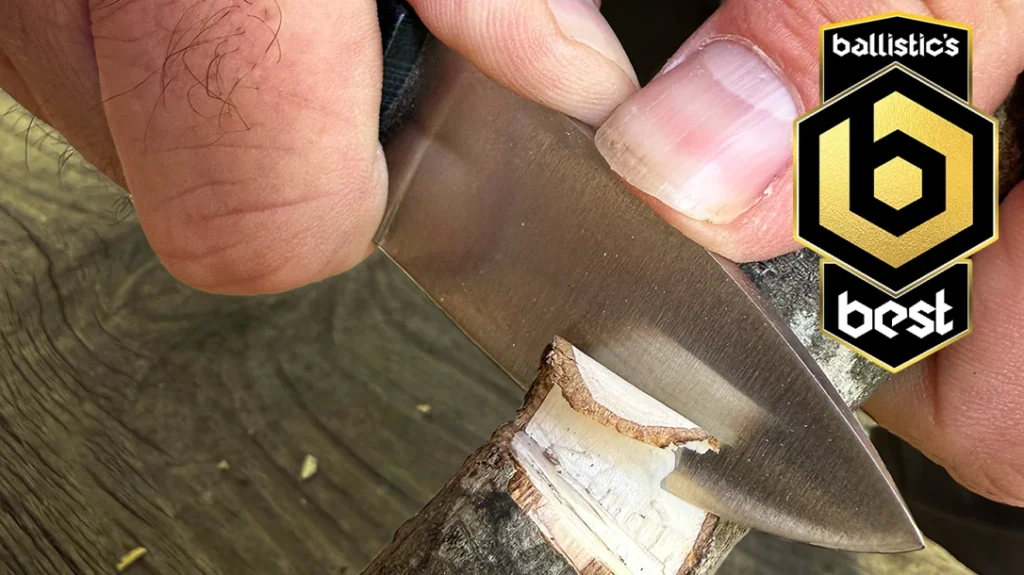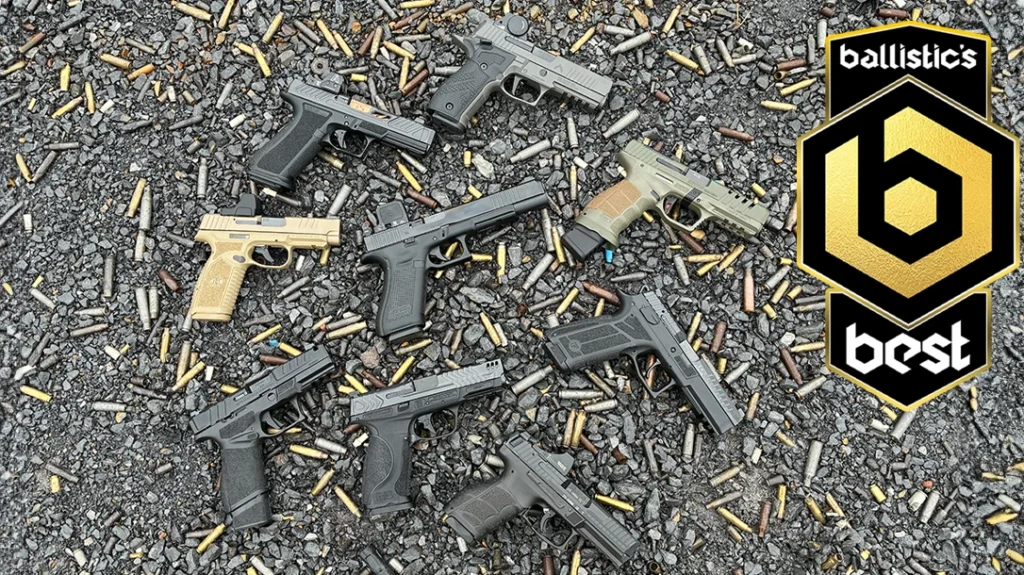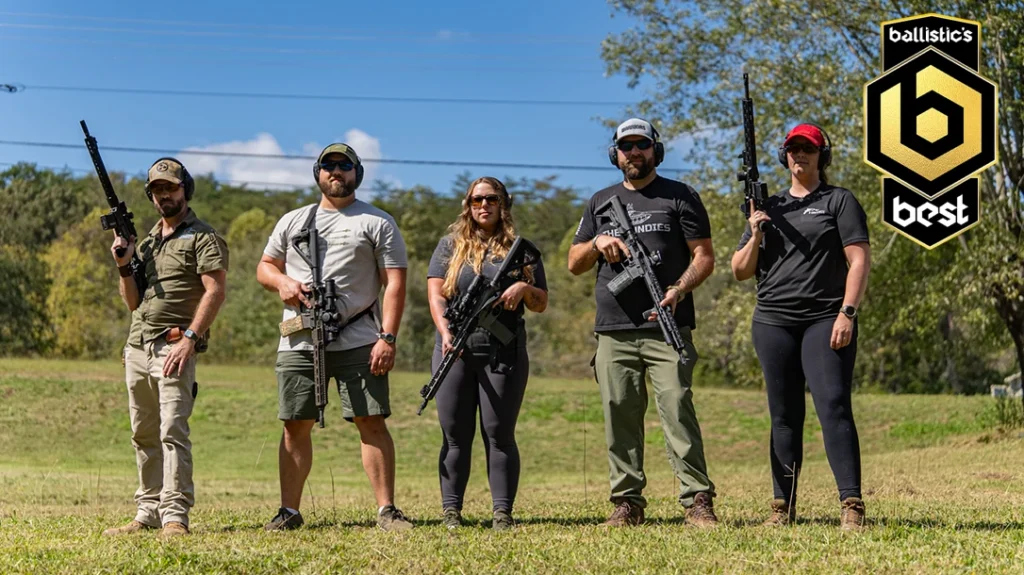If you shoot any long-range, from competition to hunting, you need to own a chronograph to get accurate data to know what your scope holds are for specific distances. And if you hand load your ammunition, it’s imperative that you use a chronograph to find the average velocity, standard deviation, and spread of your ammunition through your gun to see how consistent the load is. If you shoot handgun competitions such as IDPA or USPSA, you will want a chronograph to test your competition ammunition through your competition pistol to ensure it meets the minimum power factor rating so you aren’t disqualified from matches.
Best Chronographs to Gather Ballistic Data for Long-Range Shooters
It’s essential to capture the most accurate ballistic velocity readings for your gun and ammunition combination. Yes, ammo manufacturers will share the velocity of their ammunition on boxes, online, or in catalogs. Still, this data is usually from one test barrel and will rarely match up to your gun’s data. If the ammo manufacturer tests ammunition with a 24-inch rifle barrel with a 1:7 twist rate, but you’re shooting a 16-inch barrel with a 1:8 twist rate, the velocities will drastically differ.
From Past to Present
There are some drastically different-looking and functioning chronographs today than over three decades ago. I remember the first chronograph I used was the Ballistic Precision Chronograph from Caldwell. It had what we shooters called the “bunny ears” to shoot through to get an accurate reading. Another old-school chronograph is the Competition Electronics ProChrono DLX. This chronograph had wire antennas like the Caldwell brand that you shot your bullets, arrows, paintball, or air gun rounds through to get a reading.
Advertisement — Continue Reading Below
With these old-school chronographs, you had to shoot through vs. now, where you shoot next to a chrono to get the data, eliminating the risk of bullet strikes. Nowadays, the antennas are gone, the chronos themselves have gotten smaller, and can calculate all the data you need to know no matter what gun you’re collecting data for. All chronographs have pros and cons, including what guns they’re most compatible with, if they can be used indoors and outdoors, and how consistent they are in picking up shots.
Top 3 Most Widely Used Chronographs
Garmin XERO C1 Pro
Let’s call this chronograph what it is: the latest and greatest. I’ve had a Garmin watch on my wrist for years now. I use a Garmin dash cam in my truck and the inReach Mini 2 when I’m out backpacking. Given how innovative and technologically advanced the brand is, it only makes sense for them to have created a chronograph. Not only did they make a chronograph, but they opted to make the smallest chronograph possible, in that it’s the size of a GoPro.
The XERO C1 Pro allows you to shuffle between bow, rifle, pistol, and more modes, tracking projectile speeds from 100 feet per second (fps) to 5,000 fps. The ShotView app syncs with the Garmin device to track your shots, measure deviation, and more. It has an IPX7 water-resistant rating, which is extremely important for what we all do – shoot outdoors. Let me break down the pros and cons of this device.
Advertisement — Continue Reading Below
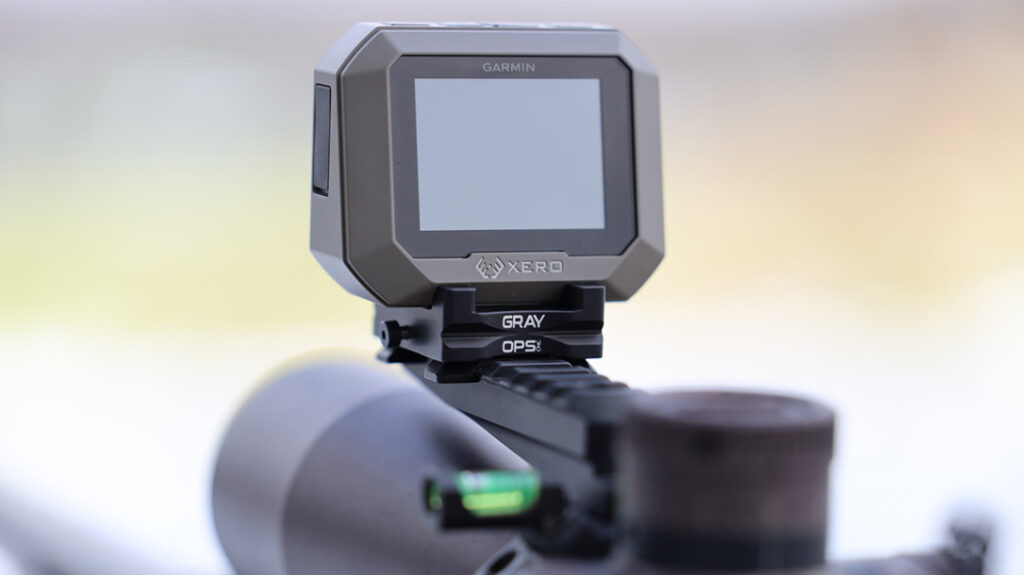
Pros
- The smallest, most portable chronograph on the market, easy to transport, pack into a suitcase or range bag, and go!
- Battery life is up to 2,000 shots or six hours continuously in use.
- It can be used indoors and outdoors.
- In my experience, this was the one chronograph that consistently picked up shot after shot, with no interruption or error codes, thanks to its sensitive and accurate sensor.
- The fastest chronograph to set up. There is no need to align it with a target or ensure your barrel is in line with the device. Just point it in the direction of fire and shoot.
Cons
Advertisement — Continue Reading Below
- The highest-priced chronograph on the market.
- While other chronographs come with carrying cases and mounting accessories, most everything you want or need will be aftermarket purchases.
- You must remember to recharge the device for subsequent use.
Learn more and shop at garmin.com
Aftermarket Accessories for the XERO C1 Pro
GrayOps Garmin XERO Mount Kit & Bump Cover
There are two can’t live without items, in my opinion, for the Garmin Chrono. GrayOps designed a Bump Cover that protects the screen and all the buttons. You can still access the charging port even with it on. GrayOps designed and tested this cover to stay on while the Garmin is in use and found that it will not affect accuracy or reliability.
Advertisement — Continue Reading Below
As mentioned earlier, you will want to purchase aftermarket accessories for the Garmin Chronograph to set it up with your gun of choice. I use an ARCA rail for my long-range precision rifles and a Picatinny rail mount for my 3-gun rifles. The Garmin XERO mount kit quickly attaches to any Picatinny Rail system or ARCA Clamp with its patent-pending QD system. You can use the arm for side mounting to ARCA rails, which makes it super convenient to see your data out of your non-dominant eye as you shoot. You can mount the Garmin chrono to the side or underneath your handguard, on top of your riflescope if you have a tactical Picatinny rail scope mount and various other positions.
Range Panda XERO C1 Pro Case
RangePanda.com is an excellent store that sells 3D-printed reloading accessories, durable Insta360 camera magnetic hat mounts, case inserts for firearms, chronographs, ammo cans, and more. I travel and fly often, so I rely on durable hard cases with custom-cut foam to protect my valuables. RangePanda sells XERO C1 Pro case inserts for Pelican, Nanuk, Apache, Seahorse, and other popular brands that make hard cases. He can customize the inside, and since I use the GrayOps Garmin Mount Kit, I can customize my cut for the mount, arm, and clamp without disassembling it all before packing it up.
Advertisement — Continue Reading Below
MagnetoSpeed V3
The MagnetoSpeed V3 chronograph is the choice of chronograph for die-hard riflemen. This chrono attaches to barrels and suppressors from ½ inch up to two inches in diameter. The V3 also has one inch more clearance in the blast zone to account for longer (up to three inches) muzzle brakes, flash hiders, etc. The MagnetoSpeed has a bayonet that attaches to the end of your barrel, muzzle brake, or suppressor that connects to a display unit via a connection cable. This chronograph can keep up with rapidly fired shots and give accurate readings from your rifle.
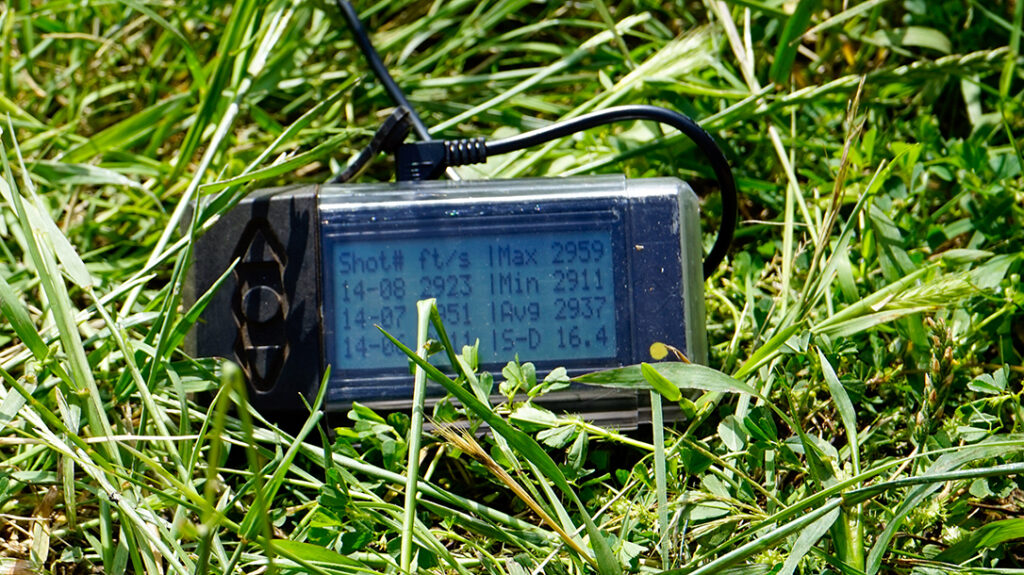
Pros
Advertisement — Continue Reading Below
- The kit comes with your display unit, connection cables, thick and thin rubber V-block spacers, the Bayonet sensor with the heavy-duty strap, an alignment rod, and a microSD card + adapter, all packed into a hard case with custom-cut foam.
- Is battery charged (one 9-volt or two CR123s), which ensures your chronograph will always run so long as you bring batteries.
- The end user can get a perfect parallel mounting for their gun using the provided V-block spacers. Note: Use the alignment rod to check that the bullet will not impact the bayonet on the way out of the muzzle.
- Advertises up to 99.9% accuracy.
Cons
- The biggest con to this chronograph is you can’t use it for any handguns, shotguns, or archery use. It is a dedicated rifle chronograph, but if that’s all you shoot, this is the best tool for the job.
- If a bullet strikes the bayonet, you will have to get a new one.
Learn more and shop at magnetospeed.com.
Labradar V1
For a long time, the Labradar was my go-to chronograph, but its performance has been far beaten by the previous two chronographs. This chrono can measure the velocity of rifles, pistols, shotgun slugs, arrows, and pellets up to 100 yards. Smaller bullets do not track as far as large bullets. The Labradar is limited to velocities up to 3,900 feet per second. It does feature a built in IPSC/IDPA power factor calculator, which is a huge bonus for competitors not to have to calculate this after the fact. You can use a micro-USB cable or SD card for data transfer.
Advertisement — Continue Reading Below
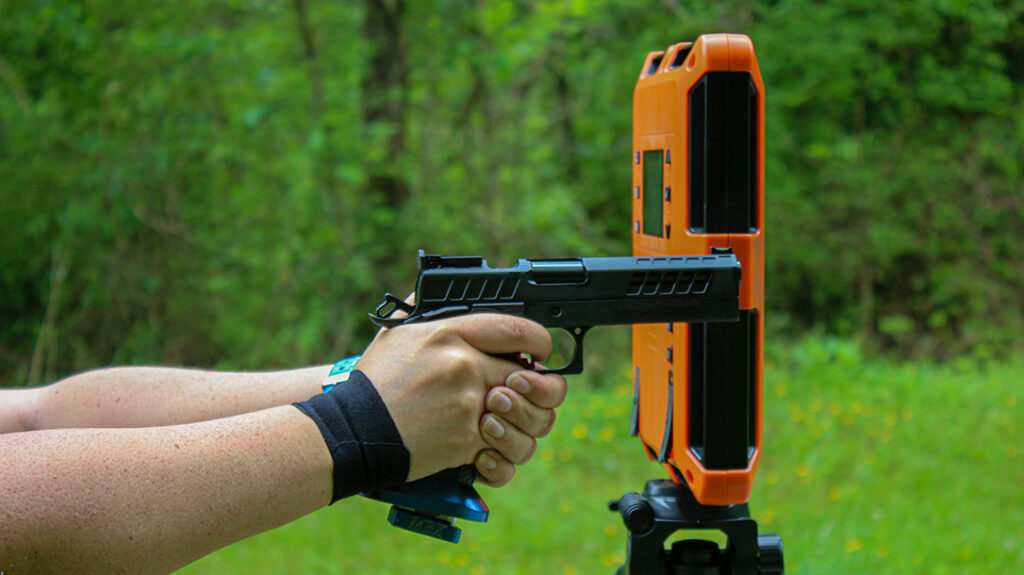
Pros
- It can be used indoors or outdoors.
- Tracks subsonic, transonic, and supersonic projectiles.
- It has a large display with all the data you need, including IPSC and IPDA power factor calculation, if you need it.
Cons
Advertisement — Continue Reading Below
- It uses six AA batteries and is the one chronograph that will eat batteries quickly. The Doppler needs full battery power to arm, so it’s best to purchase a rechargeable battery pack to plug into the unit’s USB port.
- It is one of the more challenging chronographs to set up. You need to position the chrono in line with a target downrange, lining up the top-notch on the chrono with the target. Your gun of choice must be positioned to either side of the chrono and aimed at the same target the chrono is aligned with to pick up the shot. The most amount of errors I receive when using this chrono is because my muzzle was too far away, too downrange, or too uprange of the chrono.
- You will need to purchase a tripod to mount the Labradar onto. There is no other way to keep the unit upright.
Learn more and shop at buymylabradar.com.
Coming Soon!
I wanted to mention a chronograph that is coming soon that I used and demoed at 5.7 Fest this year. Caldwell makes various chronographs, and this new one is lightyears beyond their previous models.
Caldwell VelociRadar
The VelociRadar uses Chirp radar technology. Where other chronos track muzzle velocity, this chrono tracks bullets downrange, offering a complete picture of ballistic performance. If you’ve ever wondered what your bullet coefficient is truly compared to what your ammunition manufacturer says it is, this chrono will record that data.
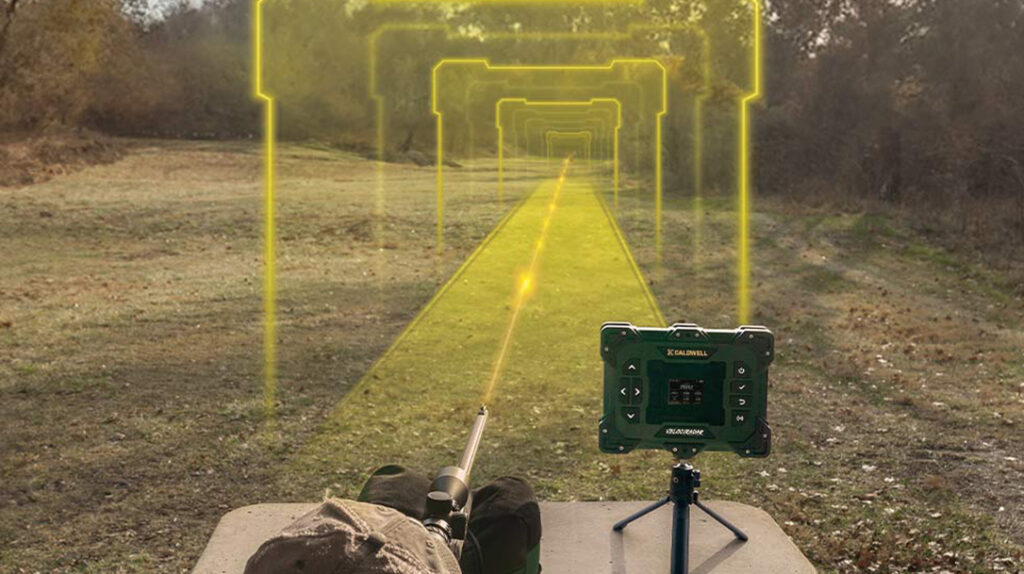
Pros
- It can be used indoors or outdoors.
- This package includes a premium ballhead tripod for shooting on a bench or prone. The ballhead pivots for proper target alignment.
- It includes a recoil-activated trigger that mounts on the firearm for increased reliability when using this chrono with suppressors or at indoor or covered shooting ranges, which affects the standard acoustic trigger’s ability to capture shots reliably.
- Compatible with the Caldwell app to remotely control the chronograph, create new shot strings, store, and name shot data.
- It can be used with rifles, shotguns, handguns, airguns, and archery.
Cons
- You must remember to recharge the device for subsequent use.
- MSRP is $549.99
- I wish it were out already! HA!
Learn more at caldwellshooting.com.
Ballistic Data Dump
I wanted to gather data from friends and fellow shooters to understand how data differs from one gun to the next. A bullet’s velocity relies on its barrel length, the ammunition it uses, and even environmental factors like temperature (especially if you reload ammunition in a different temperature than the one you plan to shoot in). Bullet grain weight, the amount of powder you use, and more affect the velocity. Here are some examples of chronographs out in the wild tracking velocities across the U.S.
Cory Klemashevich using the MagnetoSpeed in Texas
- Caliber: 6 Creedmoor
- Barrel: 26-inch Proof Competition Barrel
- Rifle Build: APAC Chassis with an Impact Precision Action
- Ammunition: Federal Gold Medal Match 107 Sierra MatchKing
- Average Velocity: 3,119 fps
- Standard Deviation: 17.2
William Conlan using the MagnetoSpeed in Texas
- Caliber: 6 Creedmoor
- Barrel: 26-inch Kreiger Barrel
- Rifle Build: Foundation Genesis Stock
- Ammunition: 109 Berger Hybrid Bullets, Lapua Brass, H4350 Powder
- Average Velocity: 2,993 fps
- Standard Deviation: 4.4
Scott Newnam using Garmin Chronograph in Florida
- Caliber: 9mm
- Barrel: 5-inches
- Gun: Pheonix Trinity Honcho
- Ammunition: 124 grain Precision Delta Hollow Points, 5.2 grains Winchester Auto Comp powder, CCI Primers, 1.12 overall length
- Average Velocity: 1,111 fps
- Standard Deviation: 19.4
Paul Wilkerson using Garmin Chronograph in Oklahoma
- Caliber: .223
- Barrel: 18-inch Faxon Heavy Fluted Barrel
- Gun: Aero M4E1 Lower/Upper, JP Low Mass BCG, JP Silent Captured Spring, Hiperfire Eclipse Trigger
- Ammunition: 69gr Sierra MatchKing
- Velocity Minimum and Maximum: 2,880 – 2,900 fps
- Standard Deviation: 8-10
Brian Yip using the Garmin Chrono at the Leupold NRL Match in Oregon (~ 2250ft+ elevation)
- Caliber: .308
- Barrel Length: 24 inches
- Twist Rate: 1:8
- Ammunition: Berger 175 Gr OTM
- Rounds: 73 rounds fired
- Average Velocity: 2666.6 fps
- Max: 2687.4 FPS
- Min: 2633.7 FPS
- Standard Deviation: 10.7
- Spread: 53.7
Same Gun, Same Ammo as Above, Chronographed in Washington (~ 600 ft elevation)
- Rounds: 40 rounds fired
- Average Velocity: 2665.1 fps
- Max: 2696.3 fps
- Min: 2641.6 fps
- Standard Deviation: 12.9
- Spread: 54.7
